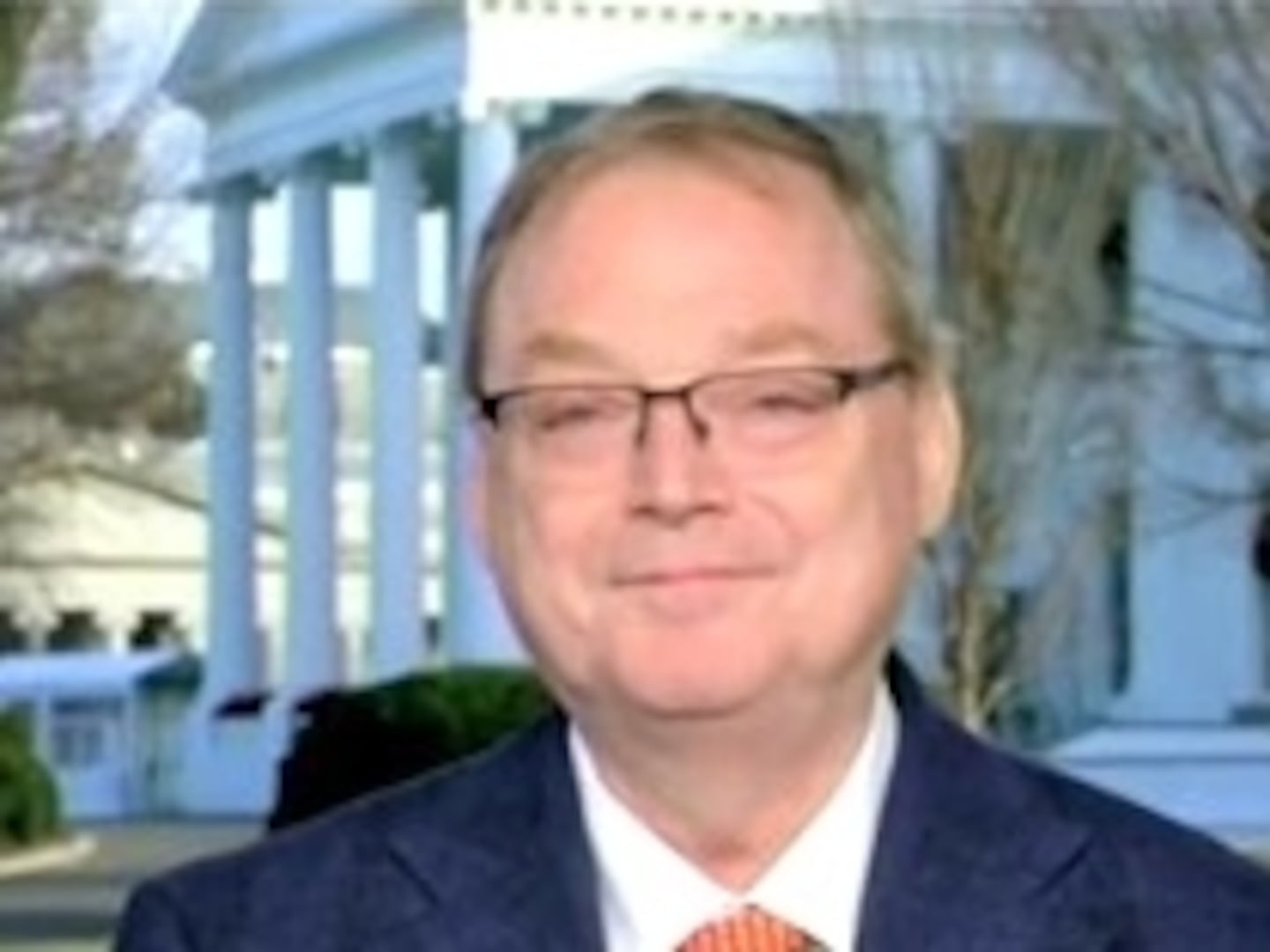For nearly a year, President Donald Trump has affirmed his trust in Russia’s Vladimir Putin while his military and intelligence chiefs warned about Moscow’s continued aggression. He has feted China’s Xi Jinping with chocolate cake after promising Beijing a trade war. It has been left to Trump’s top national security deputies to insist after the fact that everything Trump does is following a plan.
On Monday, those deputies attempted to reconcile the Trump administration with, well, Trump. The National Security Strategy, a document (PDF) that purports to shape Trump’s approach to the world, now calls Russia and China “revisionist powers,” even outright adversaries. Its 55 pages either elide the presidency that Trump has actually presented or weave his impulsive utterances an intricate tapestry that Trump will always be one tweet away from setting on fire.
“In one world, you have a good interagency [policymaking] process going. And then you have the president, who rolls in every once in awhile, presses the big red button, and blows everything up,” said Ilan Goldenberg, a Mideast policy official in Barack Obama’s State Department and Pentagon.
China and Russia want “to shape a world antithetical to U.S. values and interests,” the strategy reads. It proposes a “rethink” of a generation’s worth of policies predicated on “engagement with rivals and their inclusion in international institutions and global commerce.” In a speech accompanying the rollout of the strategy, Trump declared: “Whether we like it or not, we are engaged in a new era of competition.”
At one point, the document goes so far as to suggest that both nations are “adversaries.” China, Russia “and other state and nonstate actors recognize that the United States often views the world in binary terms, with states being either ‘at peace’ or ‘at war,’ when it is actually an arena of continuous competition. Our adversaries will not fight us on our terms.”
But it’s the document that doesn’t engage the president on his terms. Even before its release, the gulf between Trump and the strategy document’s promises are so gigantic that Goldenberg said it underscores that the “idea that the administration is going to adhere to a coherent strategy, with this president, is a fantasy.”
Here is a brief recap of a year of Russia policy under Trump. Trump’s first national security adviser, Mike Flynn, attempted to expand cooperation with the Russian military in Syria, despite congressional restrictions. A National Security Council aide proposed a unilateral easement of U.S. energy sanctions as a mechanism to sidle up to the Kremlin. In the summer, Trump acquiesced to a Kremlin plan to end the Syrian civil war with its client, Bashar Assad, in power. Trump has flip-flopped on honoring mutual-defense commitments in Europe, at a time of Russian irredentism, while agreeing to let Vladimir Putin’s interference in the 2016 U.S. election slide. He has declined to implement new Russia sanctions, which he signed reluctantly, and just last week signaled his rejection of congressional mandates to toughen his approach to the Kremlin. Even as investigations related to Russia fill the stormclouds hovering over his presidency, Trump says he trusts Putin.
And all the while, Trump’s top aides have sounded a different tone. In August, current national security adviser H.R. McMaster blasted the Kremlin’s "sophisticated campaign of subversion and disinformation and propaganda that is going every day in an effort to break apart Europe.” Later that month, Defense Secretary James Mattis pledged to defend Ukraine against Russian “aggression.” As recently as December 6, Secretary of State Rex Tillerson warned that “normalizing our relations” with Russia would be impossible until Moscow agrees to step far, far back from its disinformation and hacking campaigns.
Trump’s National Security Strategy seems to channel the voice of Trump’s aides, not the president himself, though within limits necessitated by a president who rejects as “fake news” Russia’s election interference. Foreign governments that “undertake significant malicious cyber activities” will face “swift and costly consequences,” the document states—though it never once discusses the U.S. election or Russia’s assessed role in warping it. Russia “aims to weaken U.S. influence in the world and divide us from our allies and partners,” it continues, without mentioning Trump’s own equivocations on NATO – whose Russia-adjacent flank, the document promises, will see “strengthen[ed] deterrence and defense.”
The split-personality style continues in the document’s discussion of China. Beijing “presents its ambitions as mutually beneficial, but Chinese dominance risks diminishing the sovereignty of many states in the Indo-Pacific,” the document states. Gone are previous administrations’ emphasis on balancing risk while encouraging the emergence of a rules-based China. What remains is an assurance that Washington “seeks to continue to cooperate with China” despite its perfidies. And the document claims a regional mandate for a new, undefined U.S. assertiveness: “States throughout the region are calling for sustained U.S. leadership in a collective response that upholds a regional order respectful of sovereignty and independence.”
But Trump’s approach to China has been highly personal and minimally coherent.
On the campaign trail, Trump spoke with seeming enthusiasm about a trade war with Beijing and threatened, emptily, to call it a currency manipulator. By August, his tone had changed extravagantly, tweeting: “Why would I call China a currency manipulator when they are working with us on the North Korean problem? We will see what happens!” Yet Trump has continued to threaten tariffs on China, slapping a duty on Chinese aluminum-foil exports, and reaches for trade-war instruments after reports of Chinese intellectual-property theft.
But Trump doesn’t say it to Xi Jinping’s face. After the Chinese president buttered Trump up in Beijing, Trump instead told Xi, “my feeling toward you is incredibly warm. We have great chemistry.” That followed Trump launching a Tomahawk missile strike on Syria while treating Xi, at his Mar-a-Lago resort, to the “most beautiful piece of chocolate cake that you have ever seen.”
If Trump’s chocolate-cake diplomacy was meant to secure Chinese pressure on North Korea, it hasn’t worked out to Trump’s satisfaction. North Korea conducted its sixth nuclear test in September. Last month, it tested an intercontinental ballistic missile. Long before then, Trump had declared Chinese gestures at reining in Pyongyang a failure. “At least I know they tried,” he tweeted in June. A month later, he raged that China does “NOTHING for us with North Korea, just talk. We will no longer allow this to continue. China could easily solve this problem!”
It has been a whirlwind week for anyone trying to figure out how Trump will avoid war with North Korea. After Trump derided Kim Jong-un as “little rocket man” and instructed Tillerson to “save your energy” rather than negotiating with Pyongyang, Tillerson on Tuesday proposed meeting Kim without preconditions. Even after China and Russia praised Tillerson, the White House said the time wasn’t right for talks. By Friday, a chastened Tillerson was saying that North Korea “must earn its way back to the table.”
Abe Denmark, the top Asia policy official in the Obama Pentagon, said cooperation on North Korea was “still possible” after the strategy’s harshened rhetoric, as it was based on a “hard calculation of regional interests” rather than “good feelings” between Washington and Beijing – which has “identified America as its primary strategic competitor for several years.”
“I think being clear eyed on the competitive aspects of the relationship isn’t a problem, but to me the real problem, my main concern, is that there are several things the Trump administration has already done that fundamentally limit our ability to compete with China,” Denmark continued, citing Trump’s withdrawal from the Trans-Pacific Partnership free-trade deal and “reducing dramatically the number of diplomats and resources allocated to development” in Asia.
Nor are China and Russia the only countries where the administration’s strategy diverges from Trump’s presidency.
The document pledges to “continue to champion American values and offer encouragement to those struggling for human dignity in their societies.” In practice, Trump has preferred to openly embrace any authoritarian leader and human-rights abuser willing to embrace him, including Egypt’s el-Sisi, Turkey’s Erdogan, the Philippines’ Duterte, the Saudi royal family and the aforementioned Putin and Xi. Diplomacy is called “indispensable,” even as Trump proposes cutting it substantially and prompts anger within the State Department.
It is as if McMaster, a principal convener of the strategy, has subtly replaced the Trump presidency as it is and replaced it with the Trump presidency he wishes. A favorite line of McMaster’s in attempting to bind Trump’s impulses into a coherent strategic architecture is “America first doesn’t mean America alone,” an observation he recently reprised when previewing the National Security Strategy in California.
Hours before the document’s release, the United Nations Security Council voted on a resolution demanding Trump take back his recognition of Jerusalem as Israel’s capital. The U.S., of course, vetoed it. The vote was 14 to 1.






